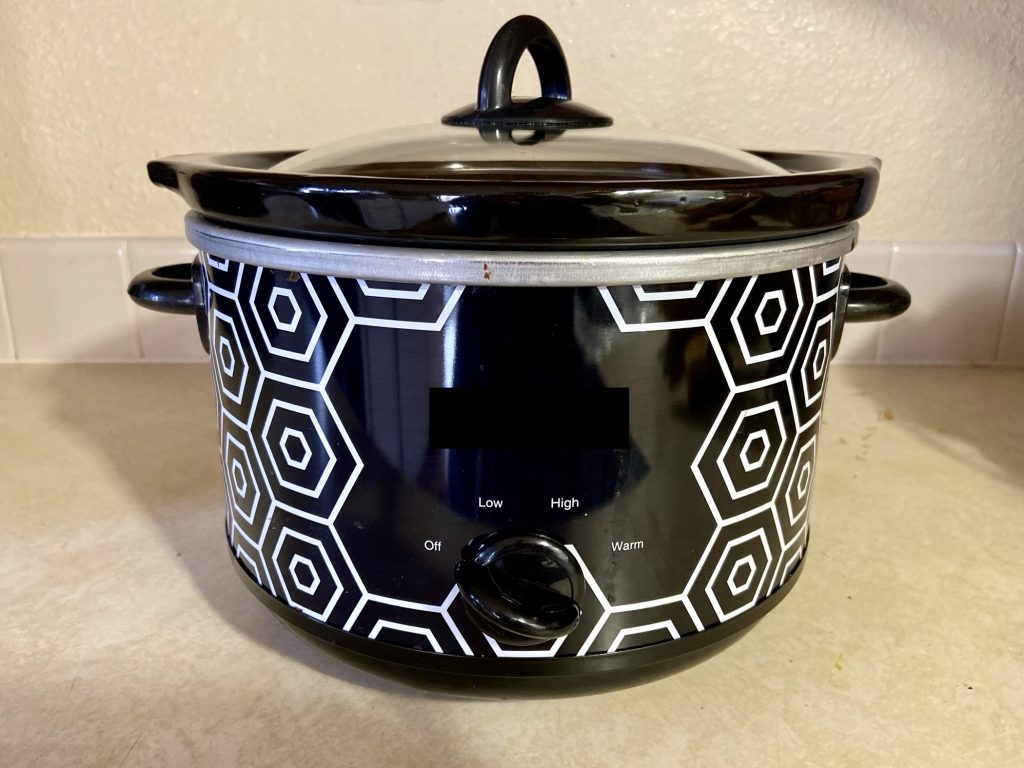
Important Slow Cooker Food Safety Tips…
Do not lift the lid unnecessarily during the cooking cycle. Each time the lid is raised, the internal temperature drops 10 – 15 degrees. It takes approximately 20 minutes to recover the lost heat, which extends the required cooking time and increases the food safety risk. Allow adequate time to cook food to proper doneness. If there is any doubt about the degree of doneness, especially when cooking meat in a slow cooker or when cooking at high altitude, use a reliable meat thermometer to ensure that the food has reached the minimum safe temperature of 165° F.
Slow Cooking: Delicious, Convenient and Economical
Slow cookers and “crockpots” are convenient portable electric appliances that continue to be popular with today’s busy cook. The lid is designed to allow condensation to form a seal that aids in the retention of heat. Whether used in the summer to avoid introducing heat from a hot oven into the kitchen, or in the winter for a hearty hot meal, a slow cooker or crockpot can make life a little more convenient. By planning ahead, you not only save time, but also use less electricity than when using a conventional oven.
Keeping Foods Safe
The direct heat, lengthy cooking time, and steam created within these tightly covered containers combine to prevent foodborne illness. Slow cookers and crockpots should heat food slowly, yet fast enough to keep food out of the danger zone — the temperature danger zone ranges from 40°F to 140°F. In the danger zone, bacteria grow rapidly and can cause foodborne illness.
- If possible, turn on HIGH for the first hour of cooking and then to the lower setting called for in your recipe. This is highly recommended when cooking meat or poultry. Slow cooking at high altitude can also extend the cooking time one hour on LOW for every 4,000 feet. Cooking on HIGH for the first hour helps compensate for the slower cooking that occurs at higher altitudes.
- Fill the cooker no less than half full and no more than two-thirds full. This is to assure safe and even heat distribution and cooking. When cooking meat or poultry, the water or stock level should almost cover the ingredients to create steam and ensure effective heat transfer throughout the slow cooker or crockpot. It can also minimize scorching of the container.
More Food Safety Tips for Crockpots and Slow Cookers
- Begin with a clean slow cooker or crockpot, utensils, and work area. Wash hands well (with warm soapy water for at least 20 seconds) before and during cooking. Place on a dry stable surface with at least 2 inches of space around the cooker. Plug directly into an outlet and avoid using an extension cord.
- Make sure meat or poultry is completely thawed before putting into a slow cooker or crockpot. Frozen pieces might not reach 140° F quick enough in a slow cooker, possibly resulting in a foodborne illness. If necessary, meat can be thawed quickly in a microwave oven before being added to the slow cooker or crockpot.
- If there are leftovers, promptly remove them from the slow cooker or crockpot to cool before refrigerating. Store leftovers in shallow covered containers and refrigerate within two hours after cooking has finished.
- Do not reheat leftovers in a slow cooker or crockpot. Heat leftovers in the oven, microwave, or stovetop, until they reach 165°F and then add to the slow cooker, where food should remain hot for serving, 140°F or above, as measured by a calibrated food thermometer.
Have an older slow cooker or crockpot? Make sure it is still operating at safe temperatures:
- Fill slow cooker or crockpot 1/2 to 2/3 full of tap water.
- Heat on LOW setting for 8 hours with the lid on.
- Check the water temperature with an accurate food thermometer, doing so quickly because the temperature drops 10-15 degrees when the lid is raised or removed.
- The temperature of the water should measure 185°F to 200°F. Temperatures below 185°F indicate the crockpot or slow cooker does not heat food adequately to avoid potential food safety problems and should be replaced.
Resources & References
Always read and follow the instructions in the manufacturer’s “use and care” book that came with your particular crockpot or slow cooker. A simple online search for “Extension crockpot recipes” or “Extension slow cooker recipes” yields great results from Extension offices across the nation for all types of tested recipes – from oatmeal for breakfast, to baked apples for dessert.
USDA Food and Inspection Service “Slow Cookers and Food Safety”
Utah State University “Slow Cooking”


